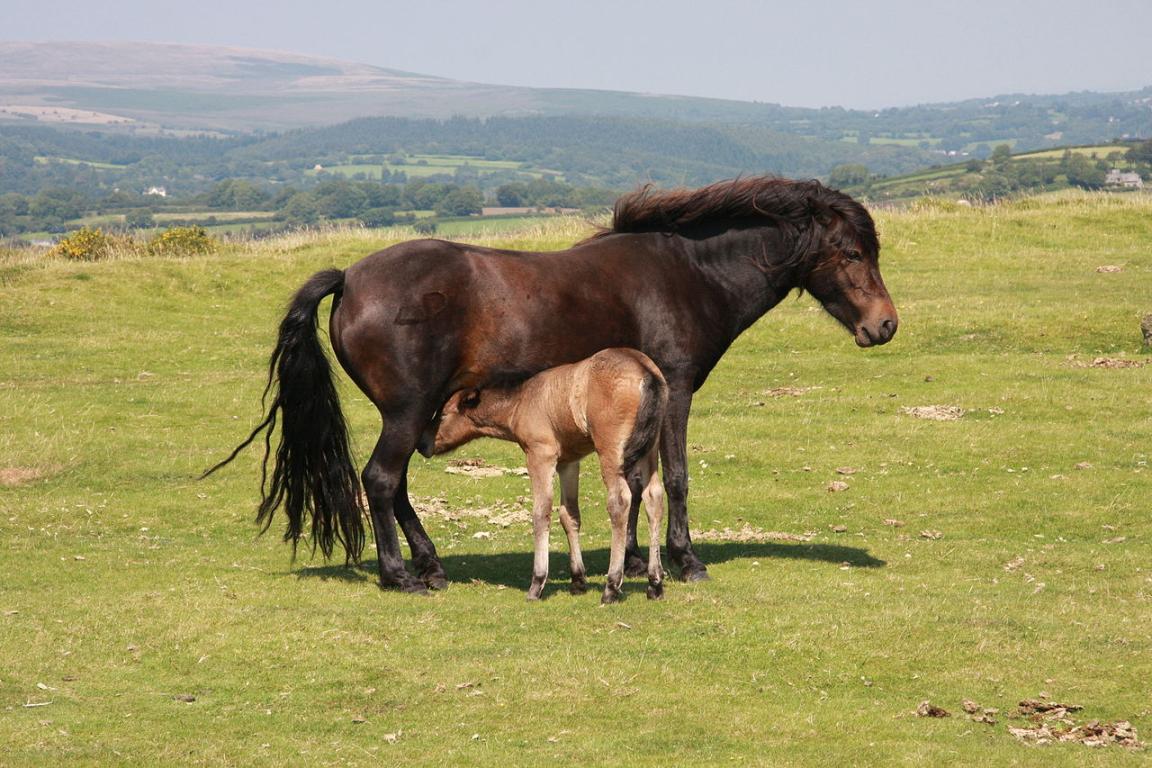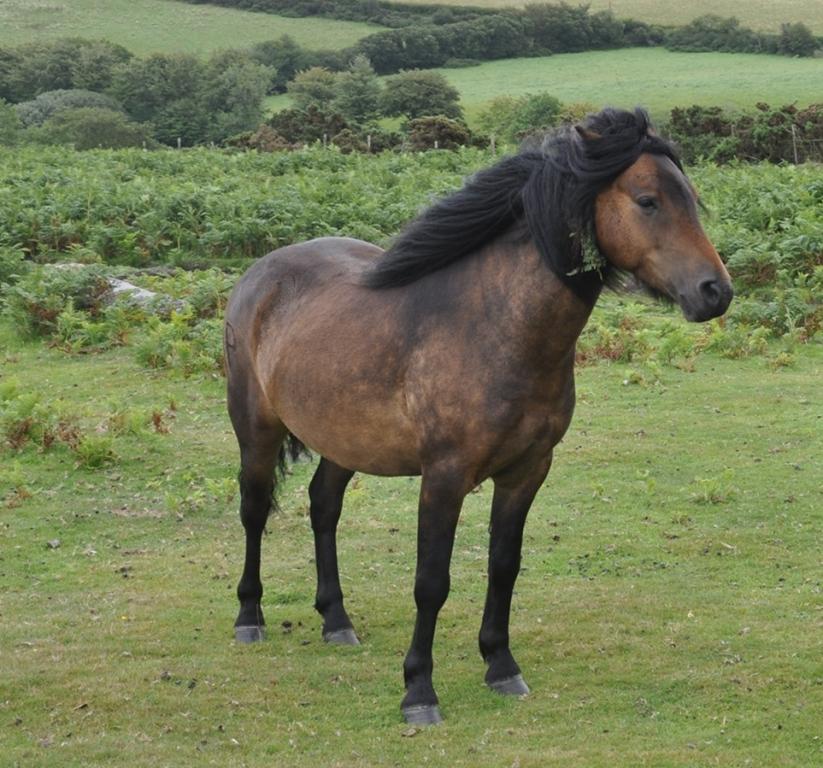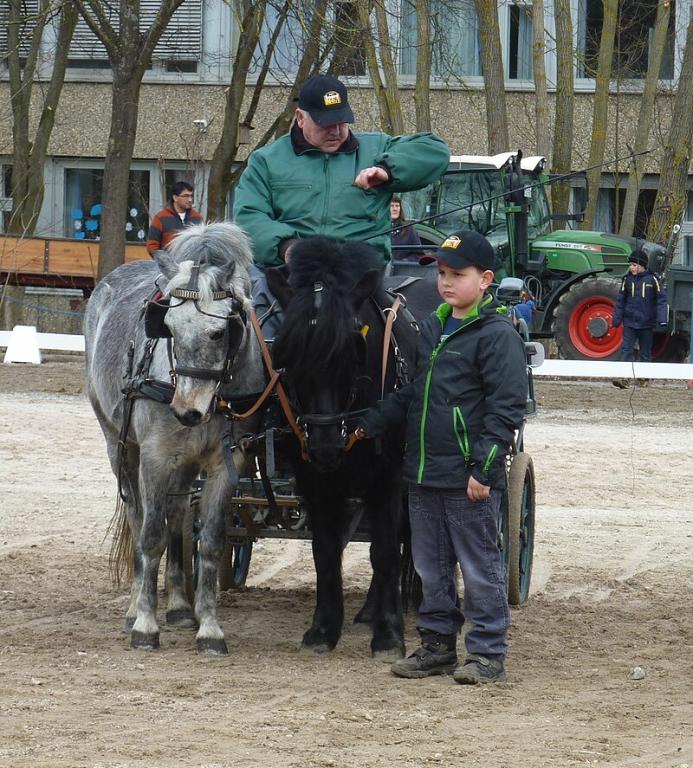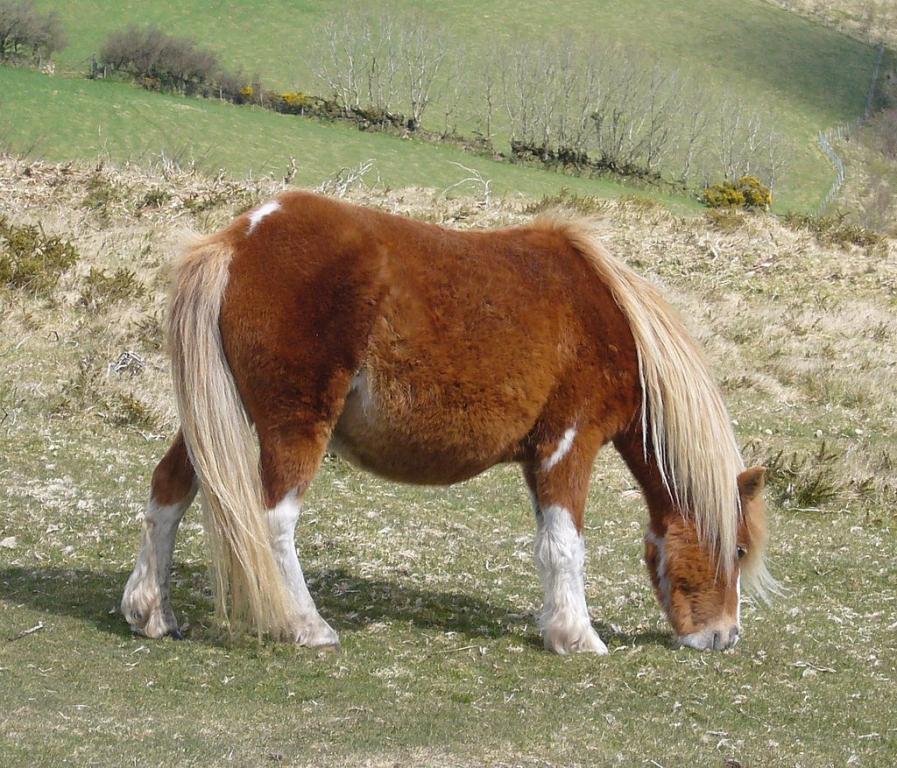
Continent: Europe
Country: United Kingdom
Weight: 200 – 250 kg
Height: 116 – 127 cm



The Dartmoor Pony originates from the granite moorlands of Dartmoor, in Devon, in the southwest of England. This harsh land, swept by strong winds and subject to a damp climate, has shaped a pony that is particularly hardy, frugal, and enduring.
Cultural context :
Present since pre-Roman times, the Dartmoor Pony was long used by local farmers for agricultural work, carrying loads, and accessing steep terrain. It shared its environment with tin mines and rural communities, playing an important role in Dartmoor’s daily life.
Its link with British tradition is reflected in its inclusion in the Mountain and Moorland classes at equestrian shows.
The Dartmoor Pony is closely associated with the wild moorlands of Dartmoor, located in Devon, in the southwest of England.
It is in this rugged environment, made up of grassy moors, peat bogs, and rocky hills, that the breed has been shaped for centuries. Traditional breeding remains centered in this region, particularly within the Dartmoor National Park, where semi-wild herds still roam.
Outside its native homeland, breeding also exists in other British counties and, more limitedly, abroad notably in continental Europe, the United States, Australia, and New Zealand often as part of conservation or selective breeding programs.
The Dartmoor Pony is a rare and valuable genetic resource, classified among the vulnerable breeds by the Rare Breed Survival Trust. It possesses a unique genetic diversity, notably through the Hill Dartmoors, semi-wild lines adapted to the harsh moorland conditions.
Historically, it has contributed to the morphological improvement of several other British pony breeds thanks to its strong bone structure, reliable temperament, and compact conformation.
Targeted infusions of Arabian blood and other British ponies in the early 20th century broadened the genetic pool while preserving the breed’s distinctive features.
Today, it represents an essential gene reservoir for disease resistance, fertility, longevity, and adaptability in extensive systems, making the Dartmoor a pillar in the conservation of equine diversity in the UK.
Ancient origins:
Native to the Devon moorlands in the southwest of England, the Dartmoor Pony is mentioned as early as 1012 in the will of Bishop Aelfwold. Fossilized hoofprints attest to its presence on the plateau since the Bronze Age, around 3,500 years ago.
Natural selection and adaptation:
Shaped by harsh natural selection due to the severe climate, it developed a robust physique, small stature, and hardy character. This adaptation allowed it to survive in grassy moors, peat bogs, and rocky hills.
Historical use:
For centuries, the Dartmoor served as a pack animal, transporting ore, granite, and other materials, especially during the Industrial Revolution.
Crossbreeding and improvement:
In the 18th and 19th centuries, it was crossed with Shetland, Welsh, Fell ponies and occasionally with Arabian or Thoroughbred blood to strengthen bone, improve movement, and preserve physical qualities.
Crisis and preservation:
The breed nearly faced extinction after the two World Wars, with only two stallions and a dozen registered mares remaining. The creation of the stud-book in 1924, the dedication of passionate breeders, and protection from the Dartmoor National Park preserved the original type.
Contemporary expansion:
Today, the Dartmoor is bred not only in Devon, but also in France, the United States, and Australia, where it remains valued for its hardiness, gentleness, and strong link to English heritage.
Personality and temperament:
The Dartmoor Pony is renowned for its gentle nature, patience, and reliability qualities that make it an ideal companion for children and beginner riders. Intelligent and attentive, it learns quickly and remains calm even in busy environments.
Energy and adaptability:
Active without excess, it has a controlled energy that allows it to excel in leisure activities as well as light sports. Its strong adaptability enables it to thrive in diverse contexts, from the arena to outdoor trekking.
Herd life:
Sociable and respectful, it integrates easily into a herd and maintains good relations with other horses. Its survival instinct and sense of direction are inherited from its traditional semi-wild life on the Dartmoor moors.
Longevity and hardiness:
Thanks to its rusticity and general good health, the Dartmoor often enjoys a long career and a lifespan above average for its size.
"It is often said that it has the heart of a big horse in the body of a small pony."
The Dartmoor Pony today enjoys growing attention thanks to genetic conservation programs led by the Dartmoor Pony Society and supported by the Rare Breed Survival Trust.
Awareness of the preservation of local breeds, along with the increasing use of the Dartmoor in children’s riding, equine therapy, and rural tourism, helps maintain interest in the breed.
However, the small size of the pure breeding population, concentrated mainly in Devon, remains a major challenge to avoid inbreeding and ensure genetic diversity.
Future prospects therefore rely on strengthening numbers through selective breeding programs, international promotion of its qualities (hardiness, gentleness, versatility), and greater valorization in sporting and leisure disciplines suited to its size.
In the medium term, maintaining a core of semi-wild ponies on the Dartmoor moors is considered essential to preserve the breed’s natural resilience and original type.
General health:
The Dartmoor Pony is known for its robustness and natural resistance to disease. Adapted to the harsh climate of the English moors, it copes well with temperature variations and humidity.
Genetic predispositions:
No severe hereditary disease is specifically linked to the breed. However, as with other hardy ponies, monitoring is advised to prevent equine metabolic syndrome (EMS) or laminitis, particularly when fed richly without sufficient exercise.
Care and prevention:
Regular dental checks, hoof care, and body condition monitoring help maintain long-term health. Due to its efficient metabolism, it is better suited to a low-sugar diet adapted to its activity level.
Longevity:
With a solid constitution and proper management, the Dartmoor can live well beyond 25 years, often remaining active for many of them.